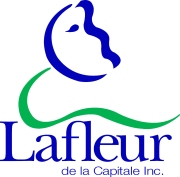Are you a dedicated ski racer/ skier that has been
frustrated by a lack of improvement on the ski trails? Have you hit a plateau
in your training and racing and not sure what else to do? More than likely the best
way to improve for next season is to step up your summer training regime.
There are several key aspects and phases to any good summer training plan and I will vaguely outline them here for anyone who is hoping to take the next step towards getting in excellent ski shape.
1. Strength
Improving your strength is one of the
fastest ways to improve. Typically this involves 2-3 strength workouts per week
in the spring and early summer to build and improve your strength, and 1-2
times a week in the late summer and throughout the fall to maintain your
strength gains. A typical week in the early summer should see 1- 2 sessions of weight training
(varied exercises for upper and lower body, not just ski specific muscle
groups) to increase actual strength and 1 session a week of endurance body
weight exercises with high reps to increase muscular endurance. In the later
summer ski specific strength such as uphill double poling and no legs skating
should be added to the plan in order get ready for the ski season. In the late
summer and fall it is also a good idea to work on your explosive power by doing
plyometric type exercises (ski bounding, two foot jumps etc.). These are
usually done up a hill for the best effect.
2. Volume
In order to be able to handle the stresses of the race season your body needs to be conditioned throughout the summer by training high volumes of low intensity (Zone 1 ~ 60-75% maximum heart rate). While increasing volume over the summer is a great way to get fitter and faster it is also easy to over do it and burn out. Be careful not to do too much more than you are used to and increase your volume slowly over a few seasons. A lot of ski racers do volume in cycles. On XC Ottawa we work on a three-week cycle. These cycles usually start with an easy week (for us 8-10 hours in the summer), then have a middle volume week (12-14 hours), and finish with a high volume week (14-20 hours). However keep in mind that many of us have increased to training this type of volume for at least 3-5 years (some of us a lot longer). If you haven’t done this kind of volume before you will be doing yourself more harm than good by trying to do hours like this, start conservative.
3. Intensity
There are several ideologies when it comes to summer intensity training, the details of which I will not get into as even I do not fully understand them. I will only briefly explain a general outline of what I has found worked for me in the past few years. Throughout the spring and early summer it is best to focus on your strength training rather than intensity, limit intensity workouts to relatively easy intervals once a week or less. These can be exchanged for events such as races but no more than once a month for hard effort. In the late summer and fall is when intensity training starts to ramp up, basically the spring and summer are just to maintain a bit of fitness from last year and make your body ready to start hard again in the fall. In the fall you can do two interval workouts a week, one with longer, easier intervals or continuous intensity (zone 3 80-90% maximum Heart Rate) and one with shorter intense intervals zone 4 or 5 (90-95 or 95 to 100% max Heart Rate).
4. Technique
This is an easily overlooked part of summer training but is essential in improving as a skier. This is the time of year to fix your technique and focus on some of your weaknesses. Living in Ontario we only have limited time each year on snow so it is very important to have your technique dialed well before the snow flies. The best way to do technique work is obviously on skis by going to the Haig Glacier or other summer skiing facility but clearly this is an option for only a privileged few of us. Roller skis are a great way to substitute. A particularly helpful way I have found to improve your technique is by doing video analysis. Get someone to film while you complete a variety of techniques and then sit down with a knowledgeable coach to get comments and suggestions on how to improve. Sometimes all it takes to see what you are doing wrong and then think about that skill while you roller ski for the next while.
All For Now!


